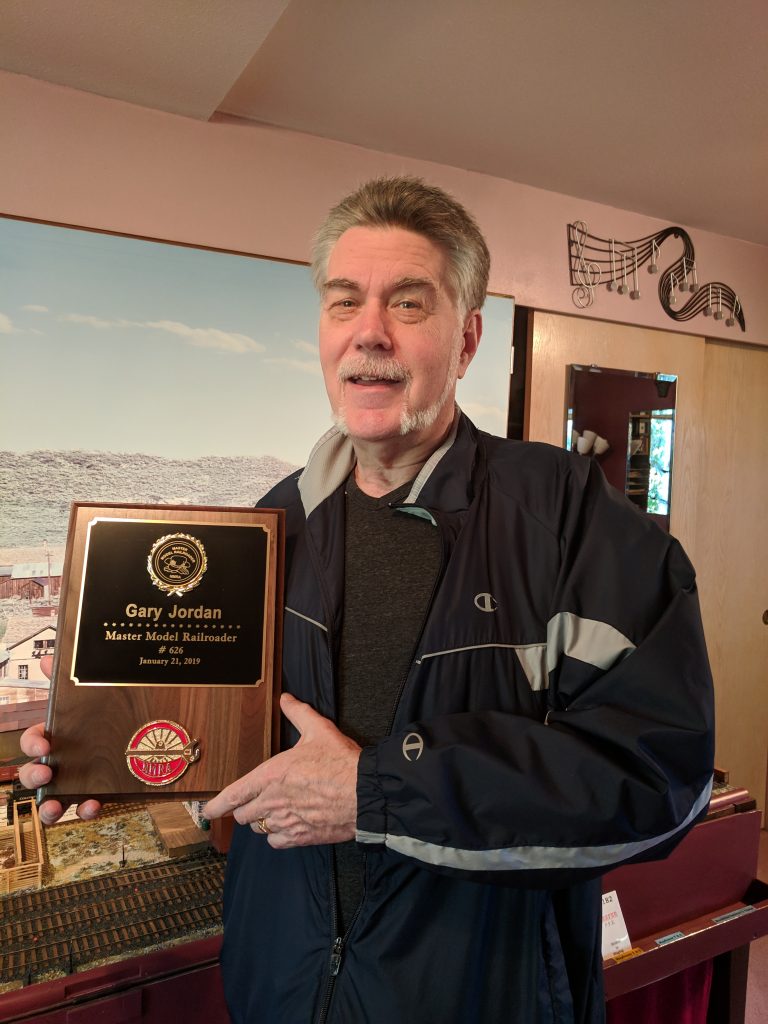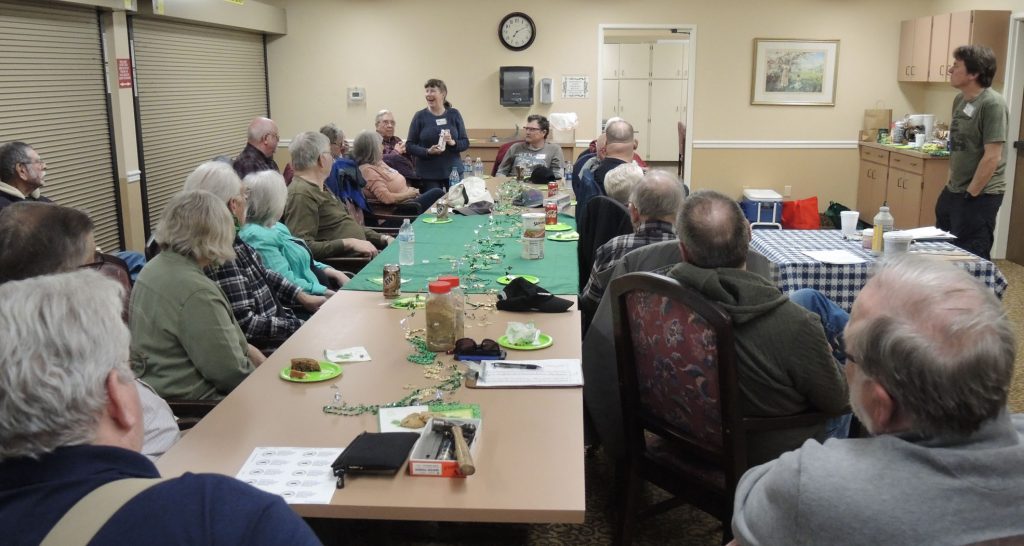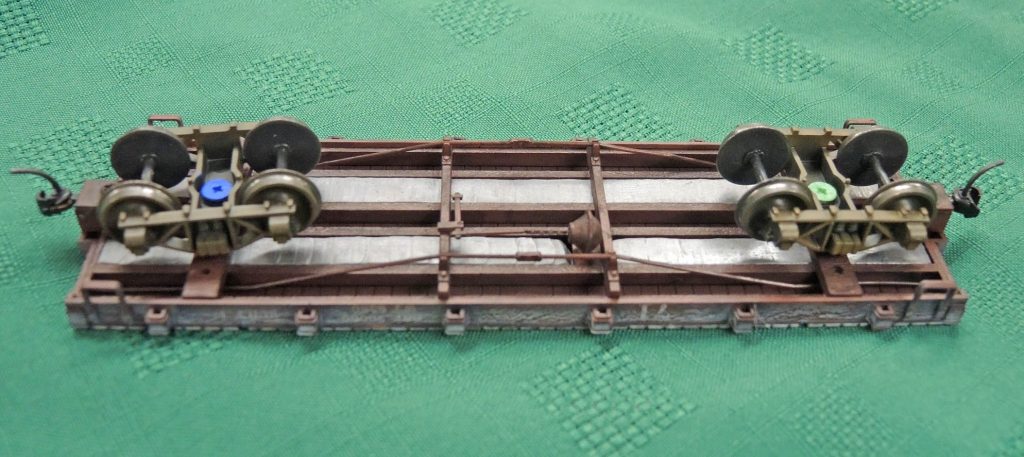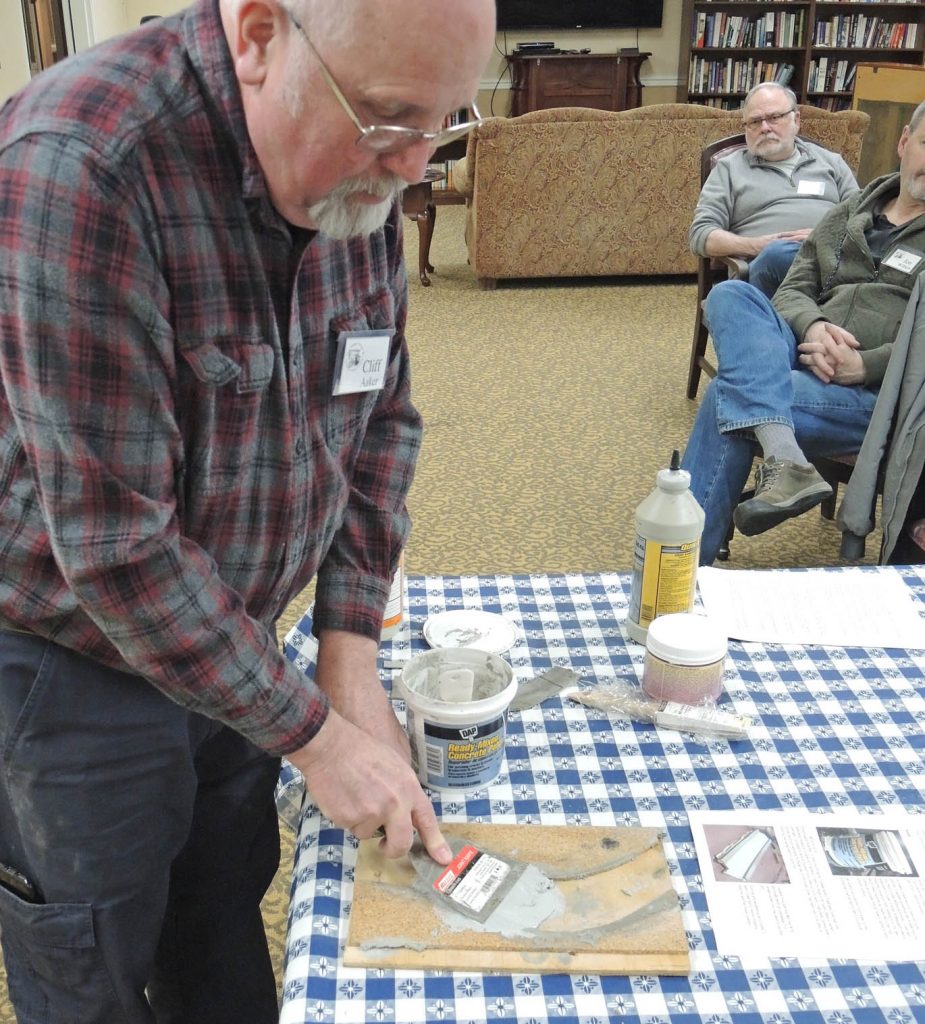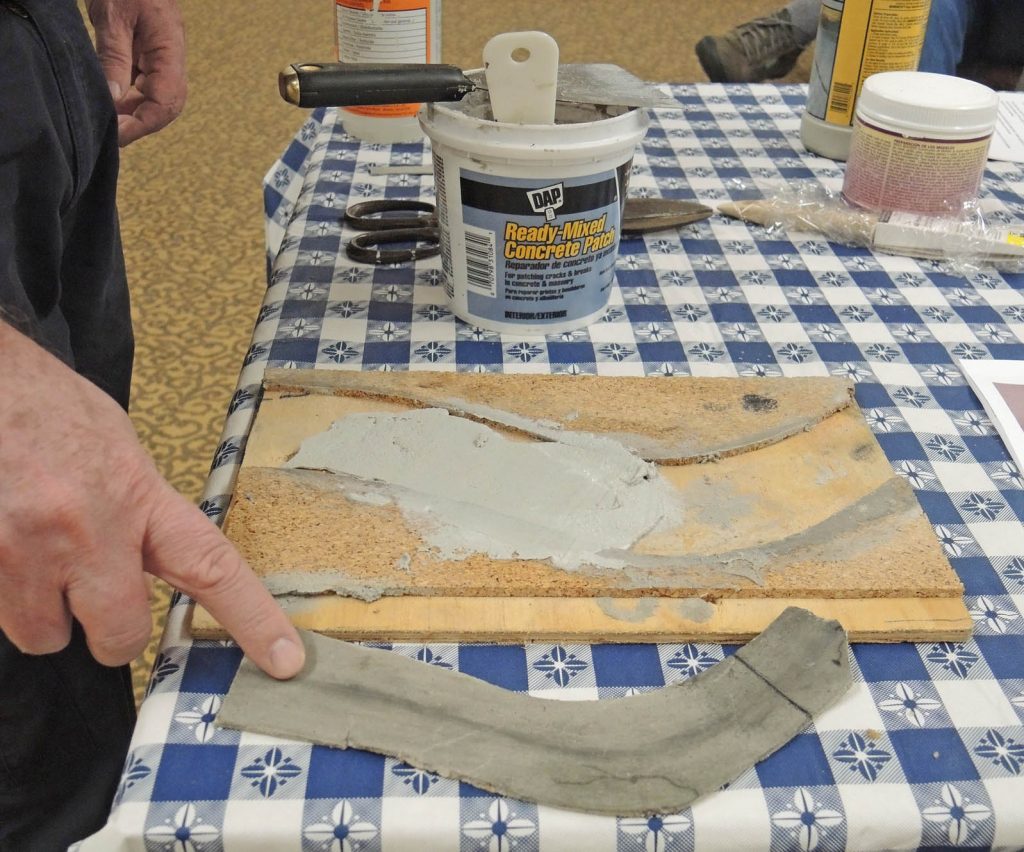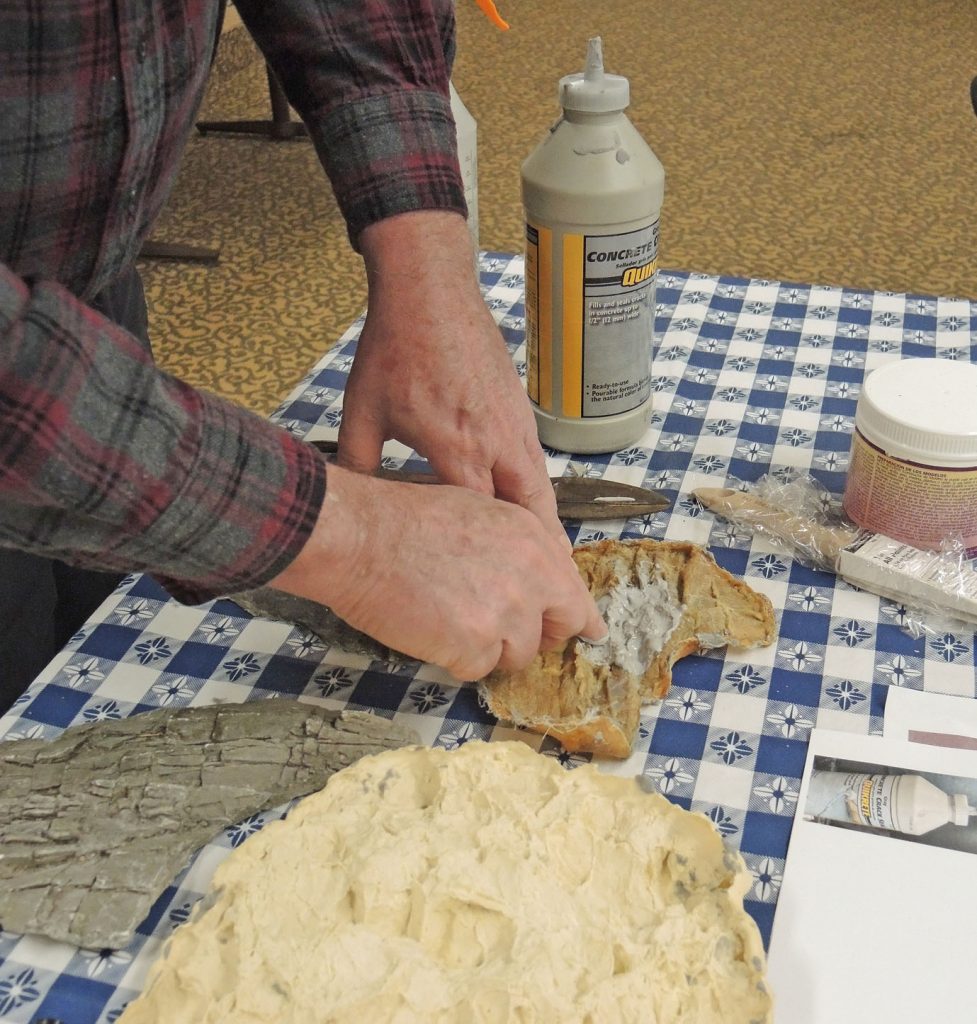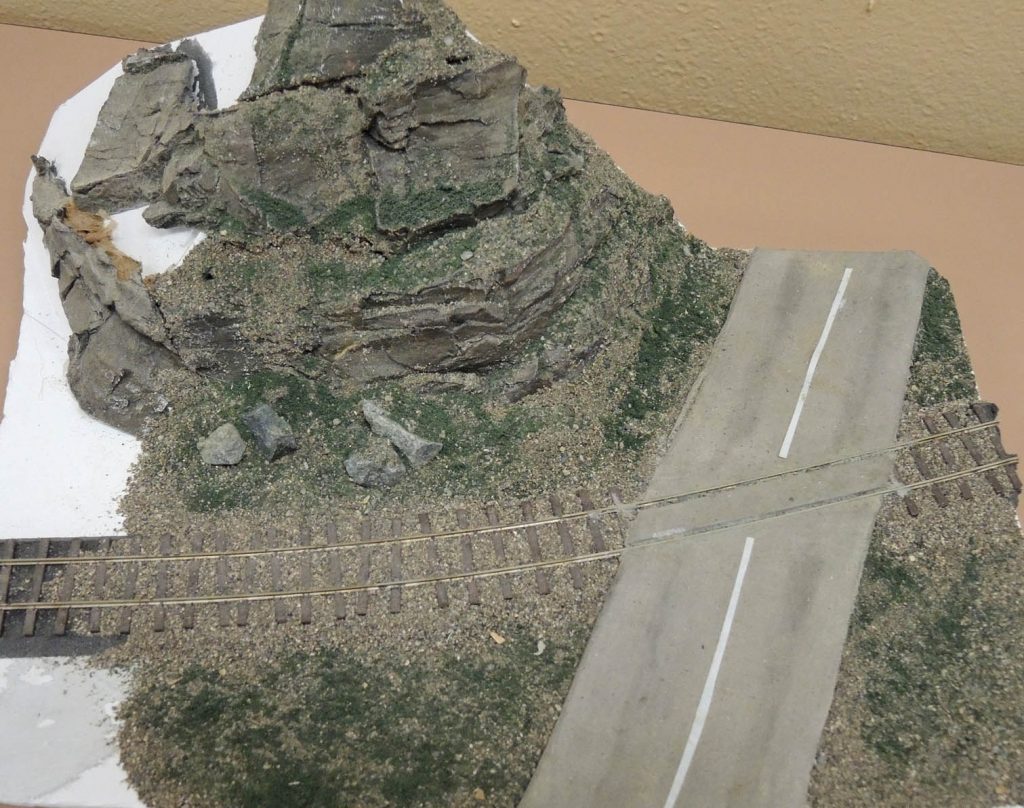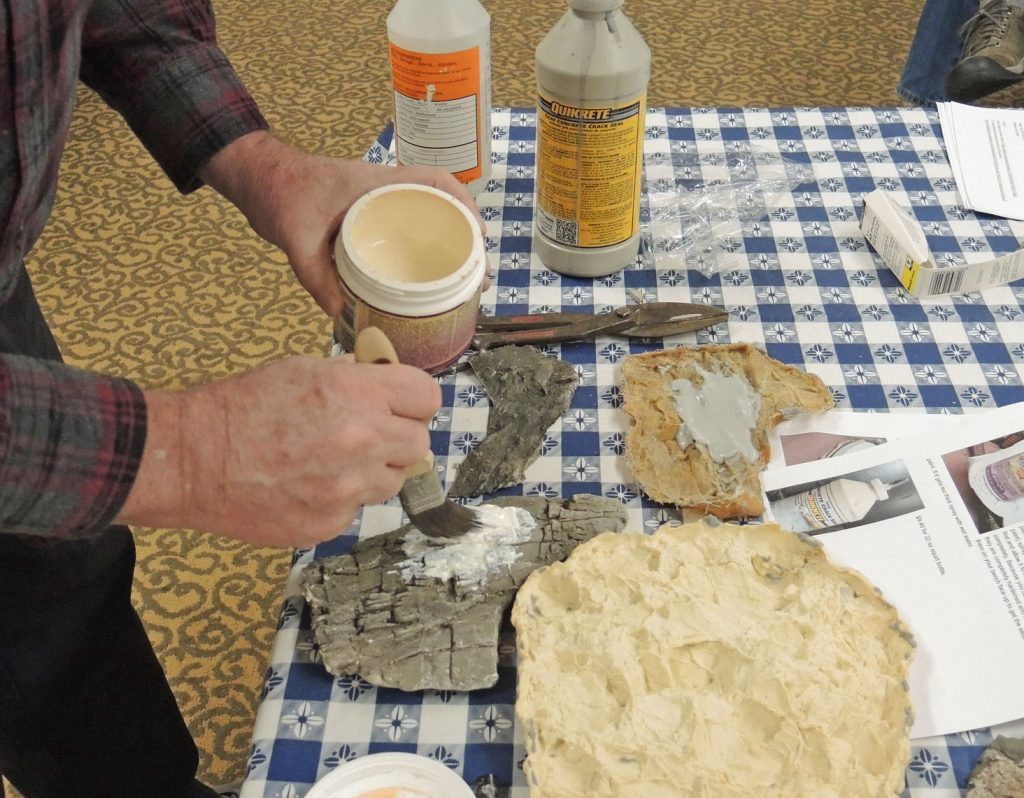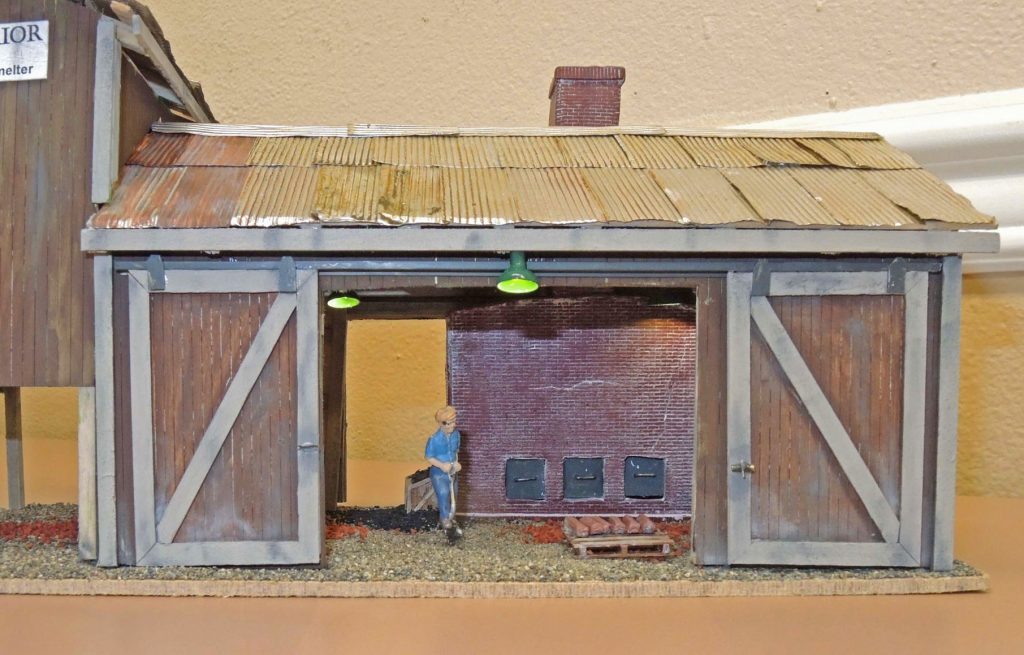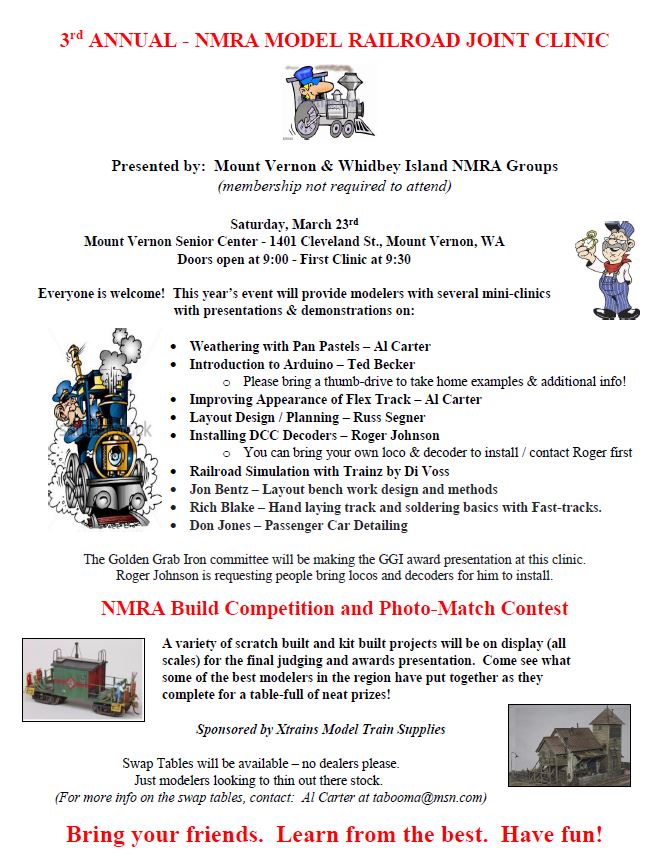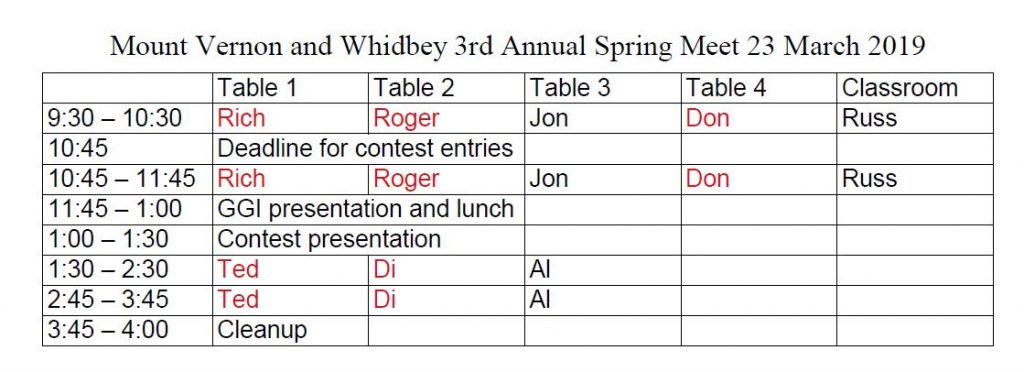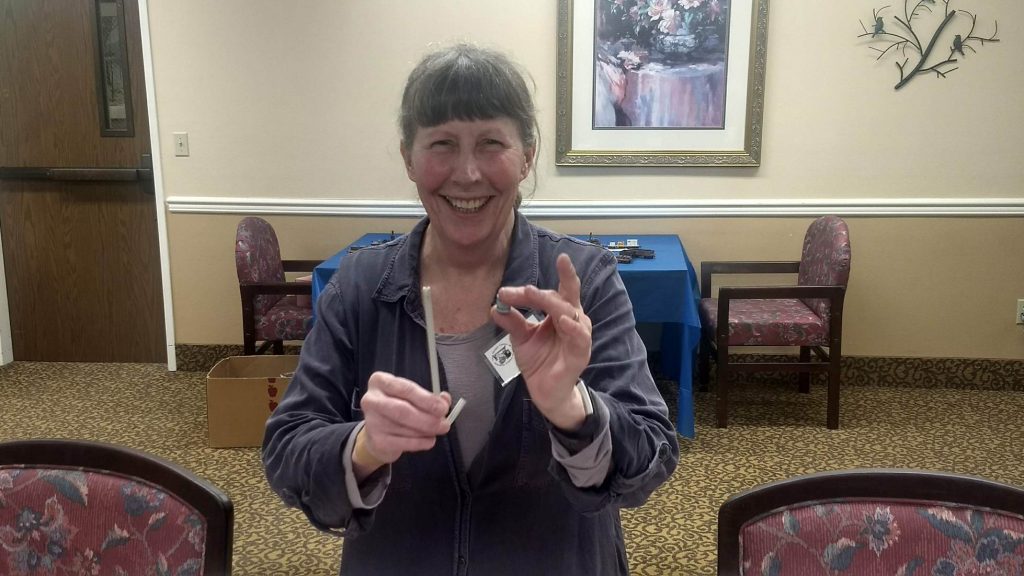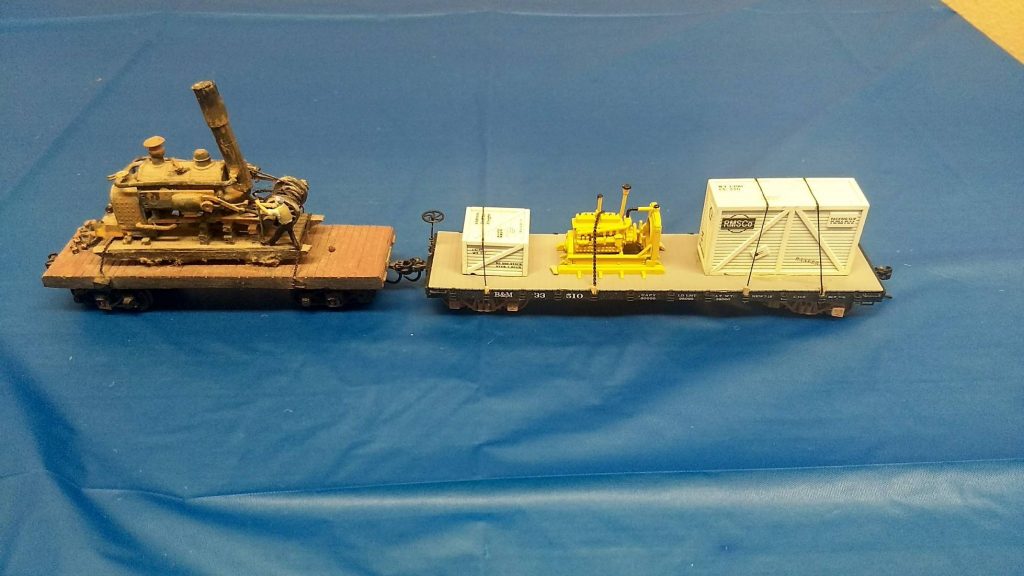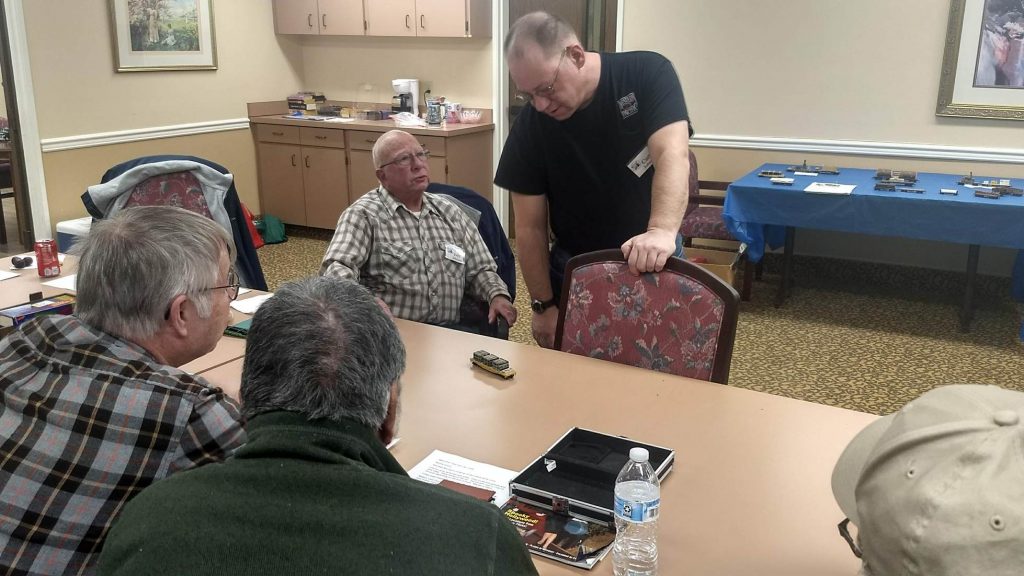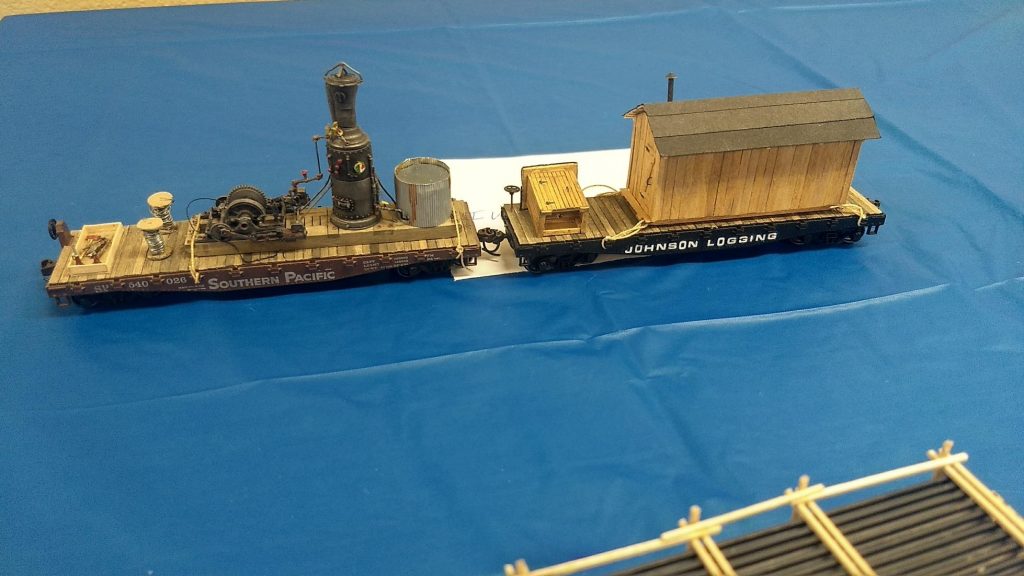Article and Photos by Rich Thom
The 3rd annual joint Mt. Vernon – Skagit Valley & Whidbey (“Oak Harbor”) clinic held March 23rd at the Mt. Vernon Senior Center was by all measures once again a great success. At least 58 participated by one count but it might have been higher; a few may have slipped by the registration table. Thanks are due the Mt. Vernon Clinic for organizing the event, for which logistics and venue were flawless. Also many thanks to the “women’s auxiliary” of the Skagit Valley & Whidbey group to lay on a fine lunch, which allowed attendees to stay at the Center and socialize instead of scattering all over Mt. Vernon: well done ladies!
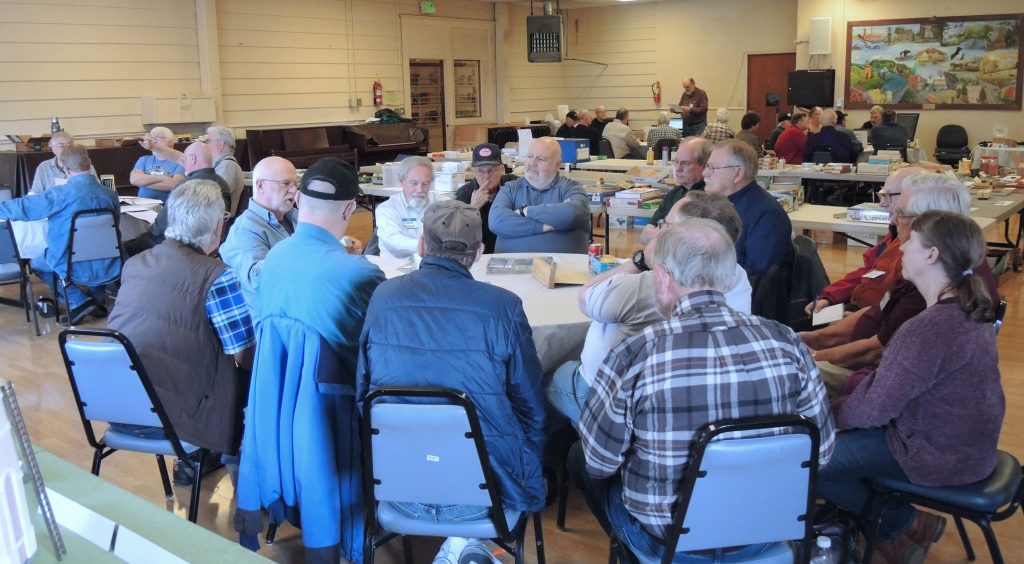
Eight clinicians conducted clinics in morning and afternoon sessions, each given twice offering participants more opportunity to not miss anything:
- Rich Blake – Hand Laid Turnouts and Soldering Basics
- Roger Johnson – Decoder Installation/General Soldering
- Don Jones – Passenger Car and Caboose Lighting Options
- Russ Segner – Layout Planning
- Ted Becker – Introduction to Arduinos
- Didrik Voss – Create Your Own Virtual RR with Trainz
- Jon Bentz – Updated L-Girder Benchwork Construction
- Al Carter – Pan Pastel Weathering
Several swap tables also overflowed with “I gotta have that” items and most sellers seemed to carry home less stuff than they arrived with, so we hope they had a successful day sales-wise—or just clearing out some of those boxes under the layout. Other tables along one wall were filled with the annual contest entries—but more of that later.
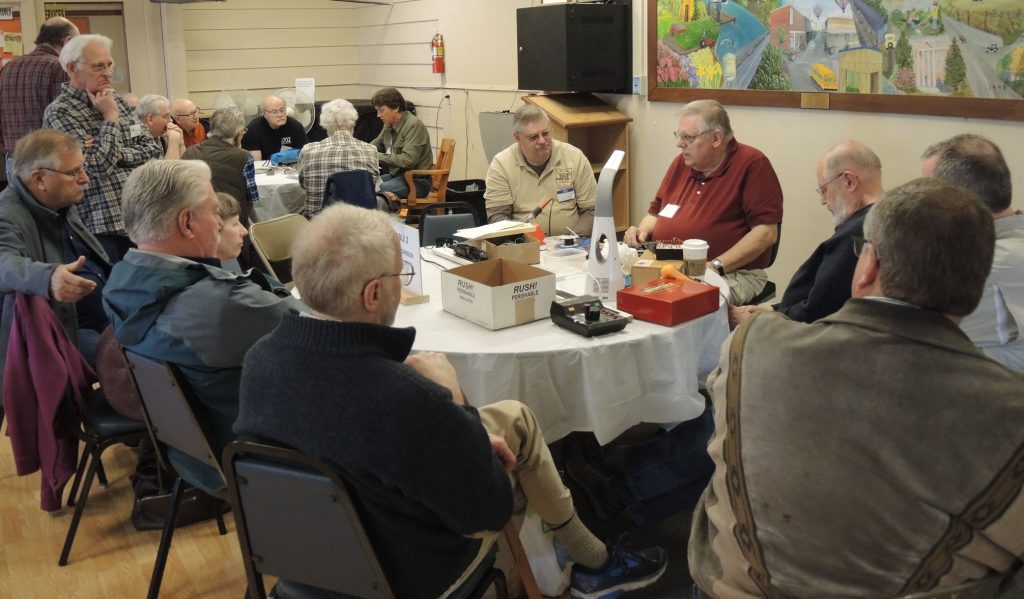
Before the lunch break, Greg Wright and Ted Becker, prior recipients of the 4th Division PNR NMRA Golden Grab Iron Service Award, presented this year’s award to Jack Tingstad (Fig 3). Jack has actively promoted the hobby for over four decades, participating in national, regional and 4th Division NMRA events, volunteering and opening his oft-published layout for many open houses. A founding member of his local area’s modeling group (now the SV&W NMRA Clinic), Jack has conducted dozens of clinics himself. Jack’s skills have earned him MMR 591. Jack was at the forefront of modelers keen on operations, and has also brought model railroading and the NMRA into the community. For fifteen years he opened his layout to the general public every Thanksgiving weekend, with extensive newspaper coverage, often welcoming over 400 people at each event, attracting many new people into the hobby. For good reason, Jack is known as the “train guy” on Whidbey Island. He’s well earned that title as well as the Golden Grab Iron Service Award.
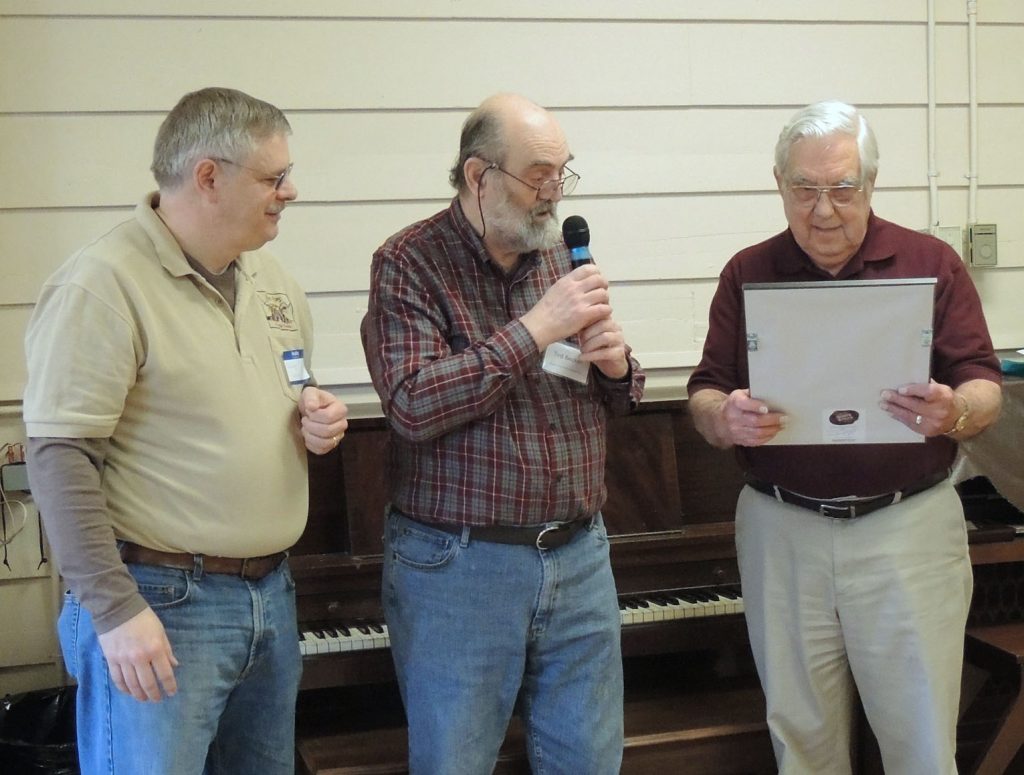
Next up, after the lunch break and judging of entries, the results of this year’s model contest were announced by contest organizer Mike O’Brien. Mike’s model railroad supply business also generously provided an entire tableful of prizes from which winners could select their choices. There were all together 17 entries in 4 different categories.
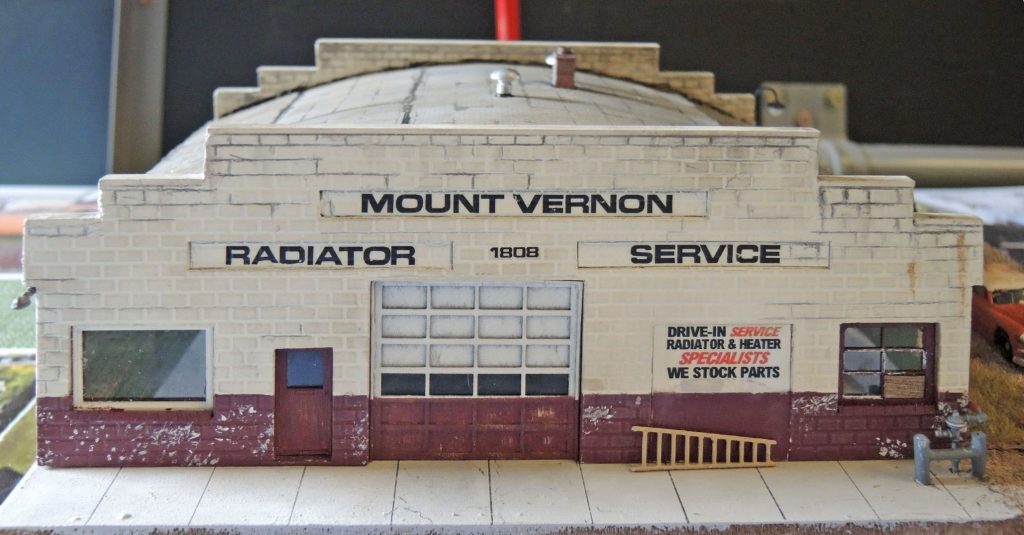
First Place in the Scratch-built Structure Category was awarded to a magnificent reproduction in HO-scale (Fig 4) of Mount Vernon Radiator Service, located on S. 2nd Street in that Skagit County town. It was a team effort by Al Carter and Nick Muff who utilized CAD plans, laser cut wood and styrene, and finishing and weathering entirely as the original. It is one of those structures for which a single photo cannot do justice to the model. The model also won First Place in the Photo Match Category for most closely replicating prototype photographs.
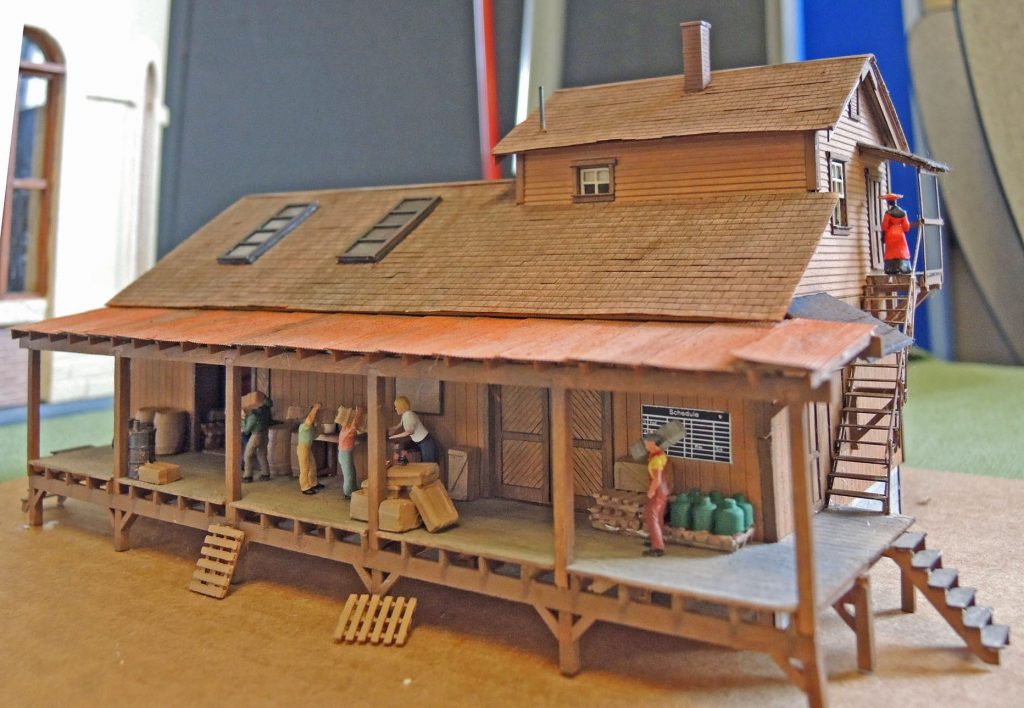
First Place in the Kit or Kit-Bashed Structure Category went to Jack Tingstad for his B.T.S. laser-cut generic warehouse, Master Creations kit #27106, again in HO-scale (Fig 5). Jack used Bragdon Chalks for weathering. Instead of etchants sometimes used to create “rust” on the corrugated porch roof panels, Jack used a combo of paint and chalk to create an equally-convincing result.
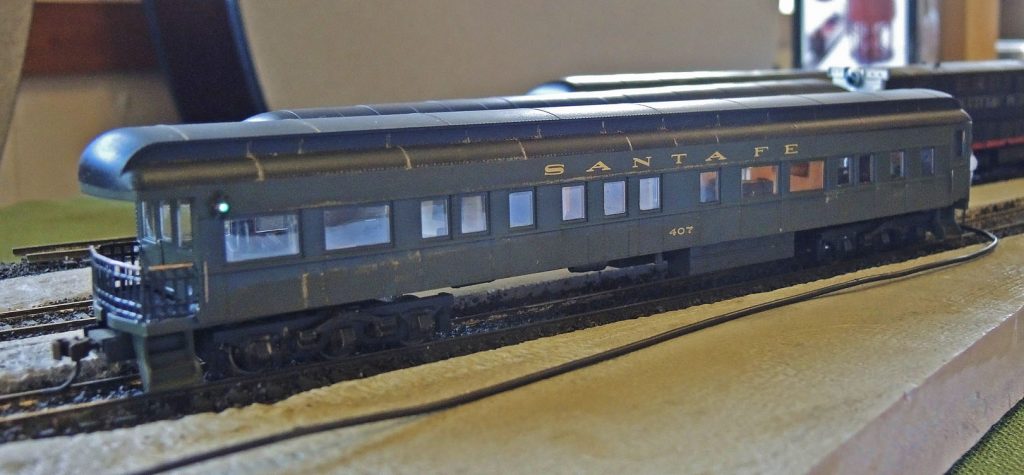
First Place kudos in the Rolling Stock Category (scratch or kit) went to John O’Connell for his 82-foot Santa Fe Observation Car No. 407 (Fig 6). It is an HO-scale kit by Bachmann. John added a fully-lighted, painted interior; working marker lights; wall art; and owners and guests enjoying their posh ride.
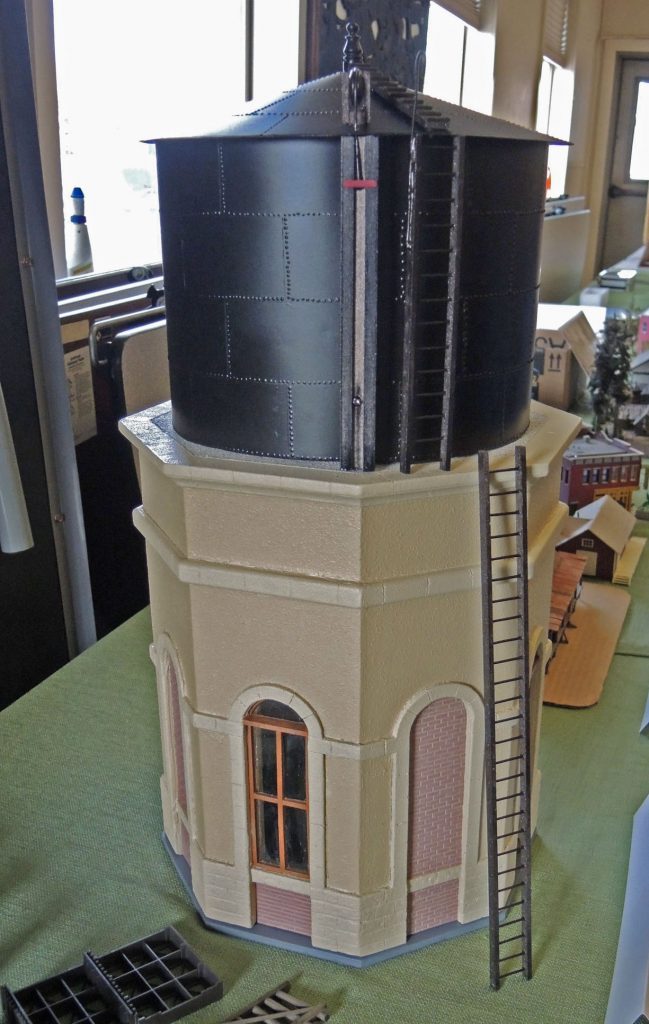
No, not every contest entry was HO-scale—to wit, see Fig 7. It’s the Second Place winner of the Scratch-Built Structure Category and was built by Doug Palm. Your reporter had to switch his camera from macro-mode to the distant scenery setting to capture this G-Scale behemoth. It’s a model of a water tower at the Gare d’Annot, France. The tank on top of the “water castle” has a capacity of 120 cubic meters, Doug wrote in his description of the model. Curious readers can do the conversion to U.S. gallons themselves—your reporter is tired.
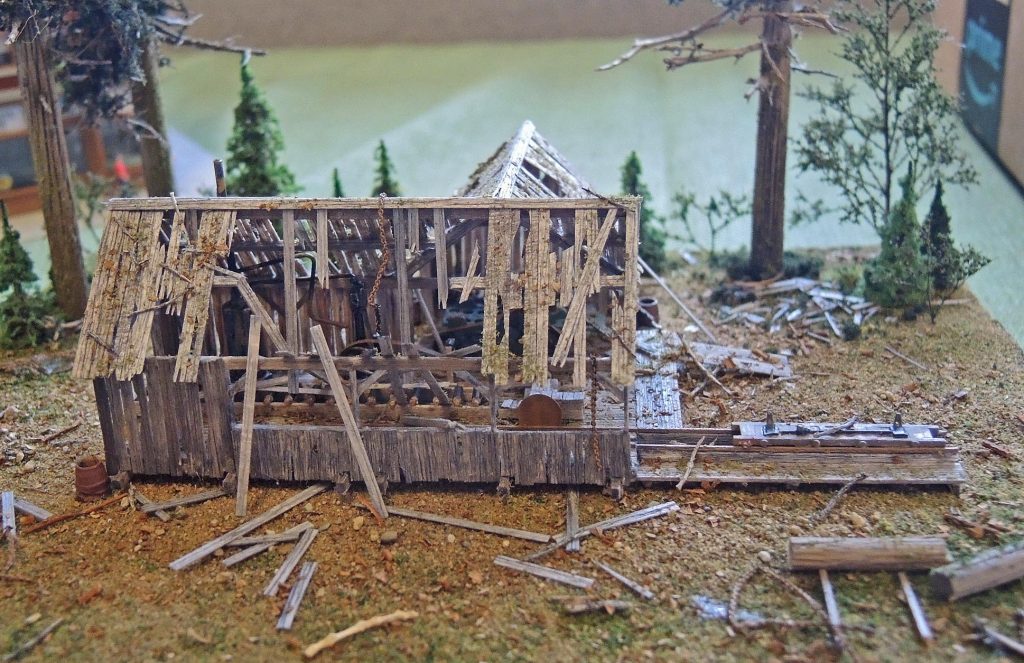
Second Place in the Kit or Kit-Bashed Structure Category was earned by Mike O’Brien for his Old Abandoned Sawmill located in the Oregon Cascades (Fig 8). Mike kit-bashed the N-Scale model, individually cutting, distressing, and weathering all of the boards. Another example where the photo can’t capture the detail of this impressive model.
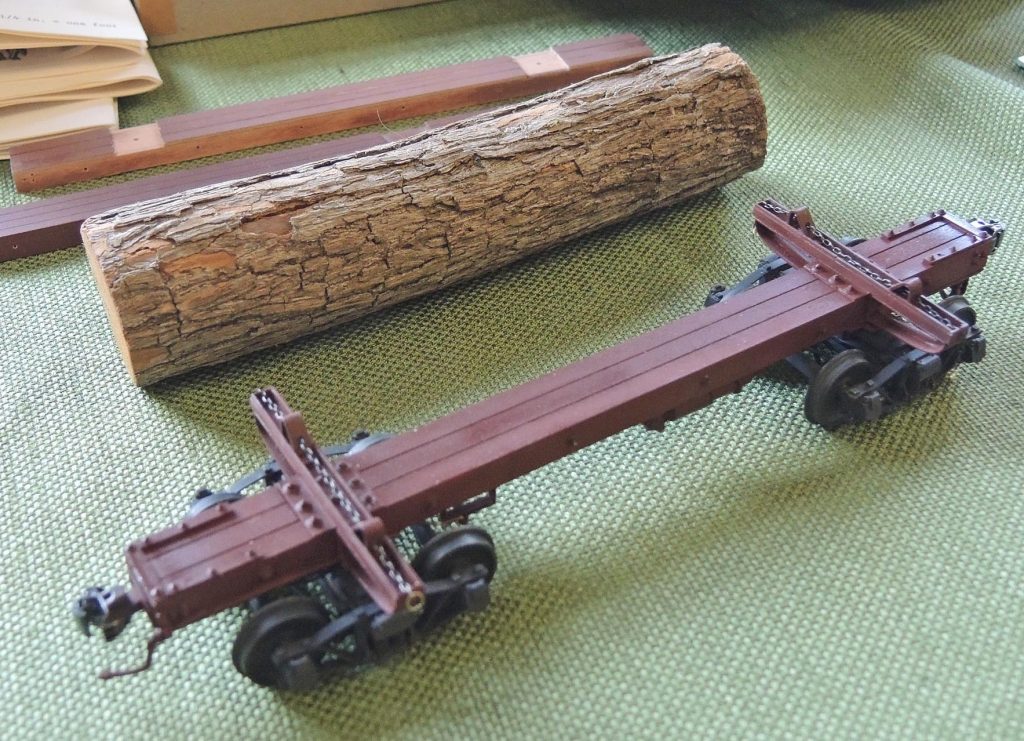
Last but definitely not least, Fig 9 illustrates the Second Place winner in the Rolling Stock Category (scratch or kit) entered by Alan Murray. It’s a Keystone Model Works O-Scale log car with brass core, Protocraft trucks, and Kadee couplers.
All the contest entries including others we didn’t have space to show were excellent, and well-illustrated the skill resident in both Mt. Vernon and Skagit Valley & Whidbey Clinic modelers. We all look forward to a repeat event in 2020!
Rich Thom

